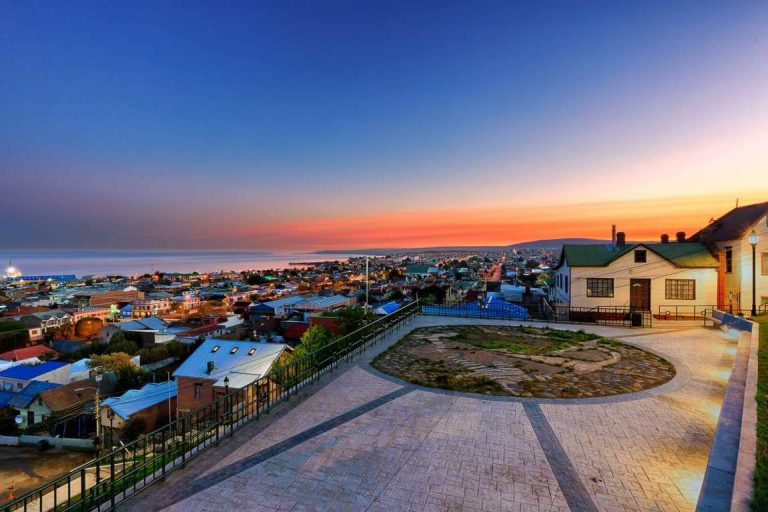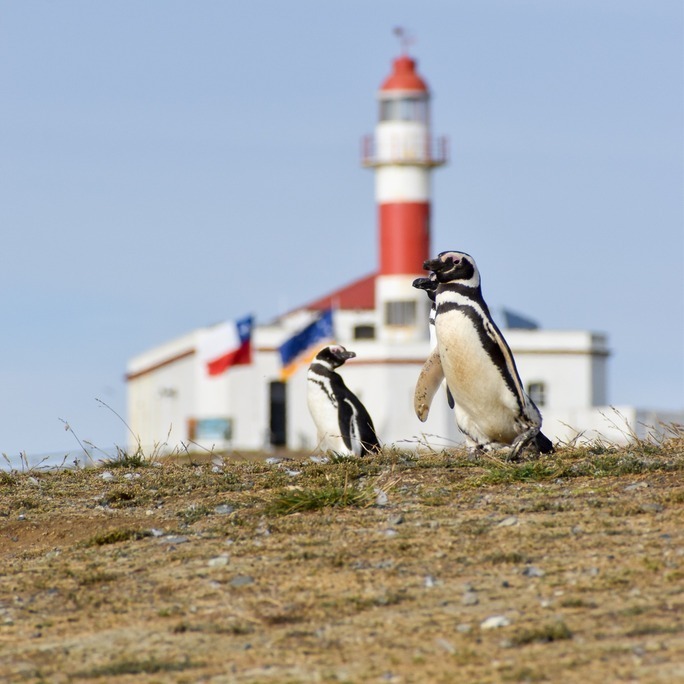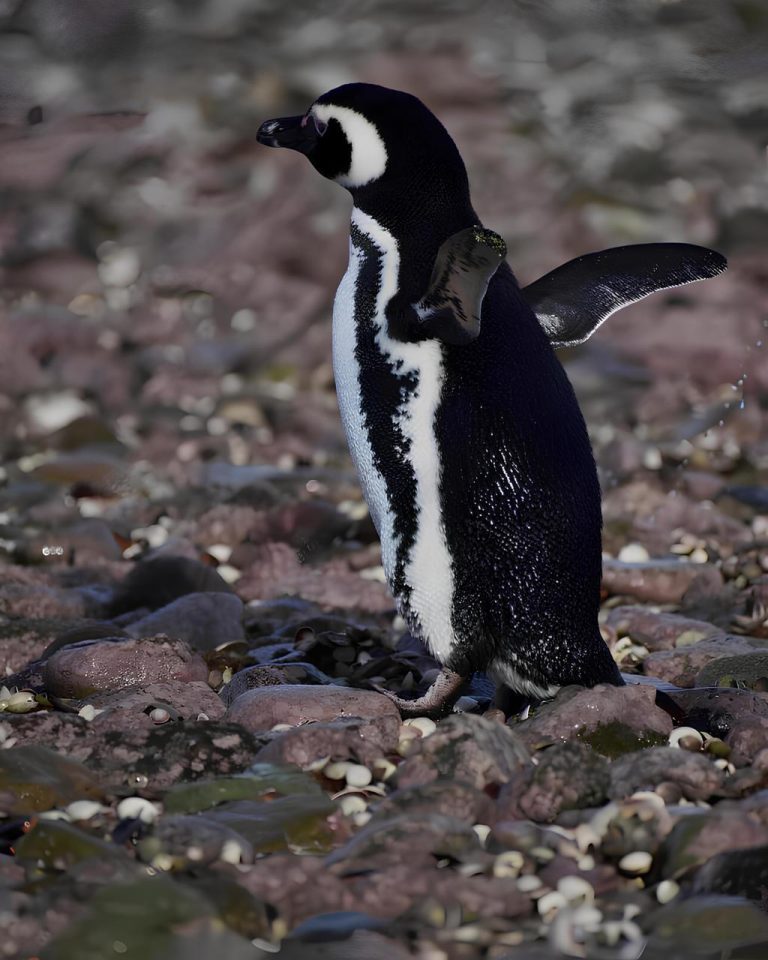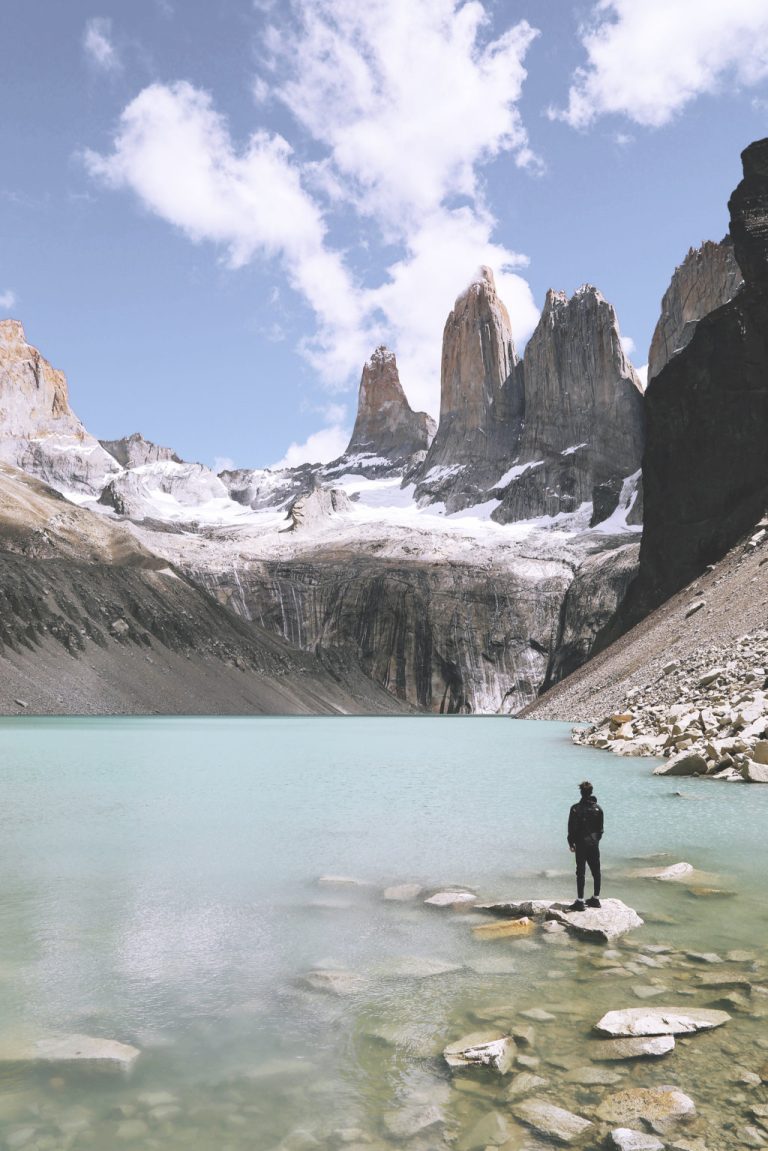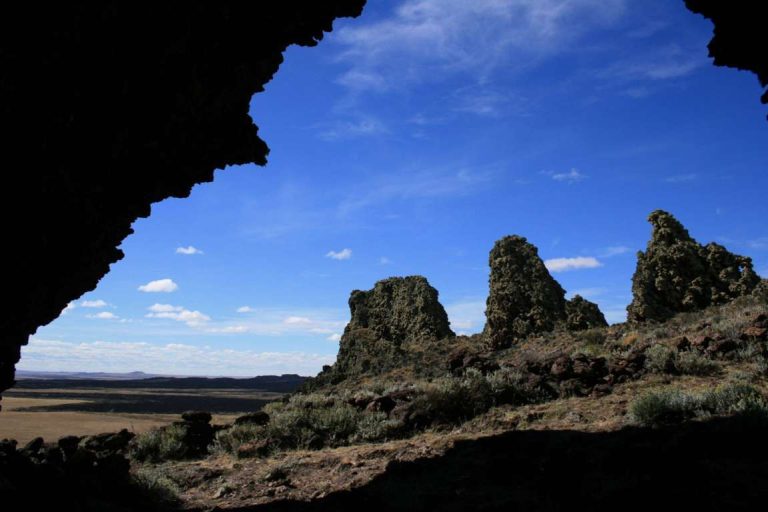Punta Arenas: Where the Adventure Begins
Southern gateway to Chile, overlooking the legendary Strait of Magellan, Punta Arenas is far more than just a stopover for expedition cruises. It’s a place that captures the spirit of exploration—with multicultural heritage, unique wildlife, remote landscapes, and bold flavors.
Here, at the edge of the world, the far south becomes a true starting point. Punta Arenas often marks the beginning—or end—of a journey to Antarctica or southern Patagonia. Located over 3,000 km south of Santiago, it’s the southernmost city on the South American mainland, and one of the most remote urban centers on the planet.
Mirador Cerro La Cruz
Founded in 1848 as a penal colony, the city experienced a remarkable boom between the late 19th and early 20th centuries, becoming a maritime hub and a key center for wool production. This legacy lives on in the elegant period buildings that line the city center—a tangible testament to the European immigrants, particularly Croatians, Scots, and Germans, who left a lasting mark here.
The best way to start exploring Punta Arenas is with a walk up to Mirador Cerro La Cruz. This easily accessible viewpoint offers a stunning panoramic view of the city, its port, and the dark waters of the Strait of Magellan, which seem to draw a line between two worlds. From here, cruise ships look like tiny specks heading into the southern vastness. It’s an ideal spot to get your bearings, take photos, and soak in the unique atmosphere—suspended between wind, sky, and sea.
The city also features several museums worth visiting, especially for travelers interested in local culture and history. The best known is the Salesian Museum Maggiorino Borgatello, with exhibits ranging from native wildlife to the lifestyles of indigenous peoples such as the Yámana, Kawésqar, and Ona. A truly surprising stop is the Nao Victoria Museum, located just outside the city. This open-air shipyard museum houses full-scale replicas of historic vessels, including Magellan’s Nao Victoria and Darwin’s HMS Beagle. It’s an immersive experience for all ages, evoking the spirit of early explorers—and reflecting the same sense of discovery that defines modern expedition cruises.
Punta Arenas also offers plenty of discoveries for the palate. Patagonian cuisine is rustic and honest, based on wild, high-quality ingredients: lamb raised on windswept steppes, cold-water seafood from the Pacific, and native berries like the calafate. The most iconic dish is the asado de cordero al palo—lamb slowly cooked on vertical grills by open fire, often served outdoors in rustic restaurants or countryside lodges. But don’t miss the centolla (king crab), featured in creamy soups or as a main course, and congrio, a delicate white fish. Beer lovers should stop by Cervecería Austral, founded in 1896, which brews some of Chile’s most appreciated craft beers. For dessert, try a calafate berry tart with hot tea or mate: legend says that those who taste calafate will return to Patagonia one day.
Magdalena Island
Magdalena Island
The area surrounding Punta Arenas is among the most remote and awe-inspiring environments on Earth. Within a few hours, you can go from walking city streets to seeing penguin colonies or venturing into glacial landscapes.
One of the most unforgettable excursions from Punta Arenas is to Isla Magdalena, in the heart of the Strait of Magellan. About two hours by boat from Tres Puentes Pier, the island is part of the Los Pingüinos Natural Monument and is home to one of the largest Magellanic penguin colonies in South America. During the summer months (November to March), over 120,000 penguins arrive here to nest. Visitors follow a designated path that protects the wildlife, and the penguins wander freely nearby—curious but undisturbed. The sight is enhanced by the presence of gulls, cormorants, and occasional sea lions. The boat trip itself is also rewarding, with frequent sightings of dolphins, albatrosses, and even pilot whales.
Lesser known but equally fascinating, Seno Otway is a coastal inlet about 65 km from Punta Arenas, reachable by land. It hosts another Magellanic penguin colony—smaller than Isla Magdalena’s but nestled in an even wilder and quieter setting. The walking trail to the shore leads through peat bogs and open steppe, offering a more intimate and less touristy experience—perfect for those short on time or seeking solitude.
Roughly three hours north by road lies the Torres del Paine National Park, one of the most spectacular natural reserves in the world and a highlight of Chilean Patagonia. Some expedition cruises offer full-day excursions to the park from Punta Arenas or Puerto Natales, with ground transfers and expert guides. The park’s iconic landmarks are the Torres, three granite towers rising sharply above glacial lakes and valleys. But this landscape is also home to guanacos, condors, grey foxes, and, with some luck, the elusive Patagonian puma. For those with more time, the park offers famous trekking circuits as well as 4×4 tours, kayaking, and shorter walks around Lake Grey and Salto Grande. Every corner offers a breathtaking view.
A completely different but equally dramatic destination is Pali Aike National Park, about two hours by car from Punta Arenas near the Argentine border. Often overlooked by mainstream tourism, this is a geological and archaeological gem. “Pali Aike” means “desolate place” in the Aonikenk language, and it lives up to its name: a vast volcanic landscape dotted with ancient craters, solidified lava, and rock formations that seem almost extraterrestrial. Some of the oldest archaeological remains in South America have been discovered here, with evidence of settlements over 11,000 years old. Walking among the craters of Volcán Pali Aike or gazing at the lunar scenery in total silence is a near-mystical experience—ideal for true adventurers.
Las_Torres_del_Paine
Pali alike
Everything about Punta Arenas feels extreme: the climate, the landscape, the rapidly shifting light, the ever-present wind. Yet the city also has a warm, welcoming spirit. Its wide streets, old-world cafés, bookshops dedicated to Antarctica and Patagonia, art galleries, and vivid murals all reflect a place that is alive, curious, and anything but ordinary.
Often seen as just a gateway to more remote destinations, Punta Arenas deserves a closer look. It offers a rich blend of history, nature, and local culture, and is easy to explore—fully integrated into the routes of modern expedition cruises. Here, travelers can begin their immersion into the spirit of Patagonia: discovering indigenous cultures and historical sites, enjoying local flavors, observing unique wildlife, and getting a sense of this region’s extraordinary geography.
Don’t miss news, updates, and reviews from the world of cruises on Cruising Journal.

